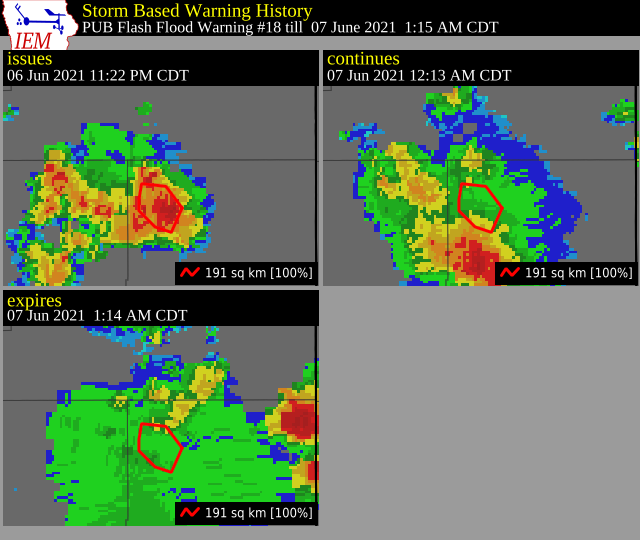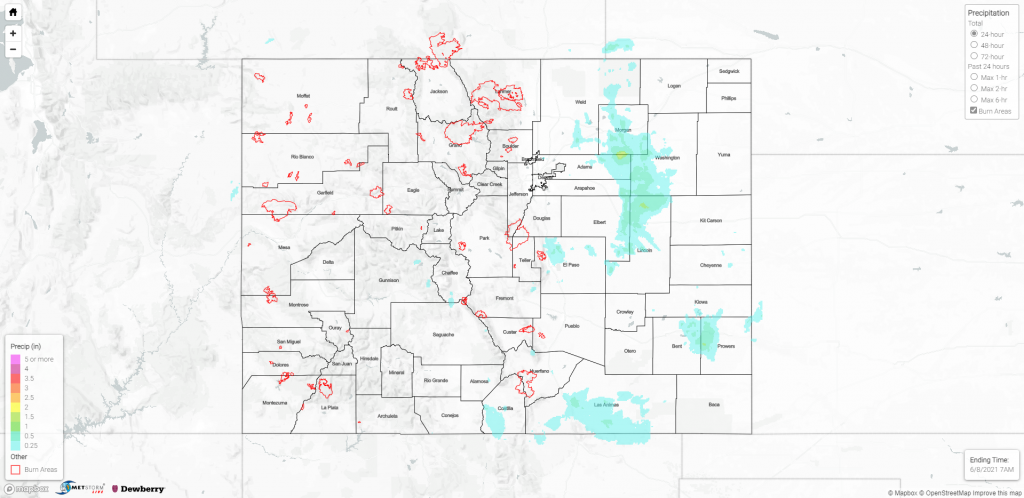Issue Date: Tuesday, June 8, 2021
Issue Time: 9:50AM MDT
Summary:
Monday was another day of afternoon thunderstorms, though largely along the Front Range, Urban Corridor and Eastern Plains. As forecasted, rainfall rates with these thunderstorms were generally low and gusty winds and small hail were the bigger threats, though some locations picked up a quick 0.1-0.5 inches under heavy downpours. Elsewhere, a high-pressure ridge in the southwest maintained hot and dry conditions in the western half of the state. Flooding was not reported on Monday. For additional rainfall totals in your area, check out the State Precipitation Map at the bottom of today’s post.
Notably, one of the storms along the Urban Corridor produced a highly-observed landspout tornado near Platteville, CO yesterday (as a consequence of being near major urban areas, there are more people to see it). A landspout is a “subset of tornadoes that occur independent of parent mesocyclone” as defined by the American Meteorological Society. More simply, a landspout occurs when the rotation comes from the boundary layer, rather than cyclonic rotation within a convective storm. Social media was full of great pictures and videos of the event, including this compilation video from Mile High Wx.
Click Here For Map Overview







